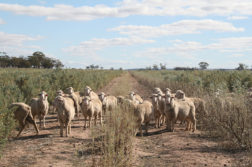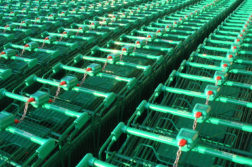With Gunns putting themselves under the financial spotlight by potentially misleading the Australian Stock Exchange, now is a good time to have another look at the economics of the proposed pulp mill.
As the global financial crisis begins to bite in what commentators are quaintly calling the "real" economy, any big project that promises to create jobs might, on the face of it, be a shoo-in. But it’s not hard to see why the majority of Tasmanians oppose Gunns’ pulp mill when it offers only illusory new jobs to Tasmanians while jeopardising our $3 billion tourism industry and our priceless environment.
If anything, it is at difficult times like these that we most need to do proper cost-benefit analyses of any proposals. Instead of simply promoting the supposed benefits of a project, as Gunns is doing, we need to weigh those benefits against not only the direct costs we will incur by going ahead but also the lost opportunity costs — what else could we be doing that would be more beneficial to more people?
The Greens have promoted this kind of long-term, strategic thinking since our inception in Tasmania almost 40 years ago as the United Tasmania Group. While this approach is finally gaining a great deal of support globally, with major players from Deutsche Bank to President Obama talking about a "Green New Deal", it seems that the idea is still struggling in my home state.
There have been plenty of warnings from economists, businesspeople and concerned locals that the claimed benefits of the Gunns pulp mill need to be weighed against the jobs that it threatens in other industries. Further, we need to know about the economic risks to Tasmania if world pulp prices decline, as resource stocks around the world are already doing. Despite these warnings, the negative impacts of such a mill on agriculture, vineyards, tourism and fishing industry jobs have still not been assessed by Commonwealth or Tasmanian governments.
In 2007, the Tasmanian Business Roundtable for Sustainable Development commissioned a team of economists to study the economic claims made by Gunns and the impact the project will have on the state’s economy. Their report, Sustainable Development in Tasmania: Is the proposed pulp mill sustainable?, found that the $834 million tax contribution over the life of the project — shown in the Gunns benefits analysis — is entirely cancelled out by the $847.3 million in subsidies provided to the project and conveniently left out of Gunns’ analysis.
There were other costs that the report included that Gunns chose to leave out. One example is the cost to the Tasmanian economy of converting agricultural land to plantation to supply the pulp mill, expected to be around $403 million.
Other significant costs concern the risks associated with the operation of a mill of this kind, and the dollar value put on them. They include the risk to Tasmania’s fishing industry due to dioxin contamination from pulp mill effluent (quantified in a medium risk scenario at $693.5 million and 700 job losses over the life of the project), the risk of respiratory disease caused by the emissions from the proposed mill ($350 million), and the huge risk to Tasmania’s tourism industry. This last one is probably the biggest, and used research carried out by the Tasmanian Tourism Industry Council. The medium risk scenario quantified that cost at $1.1 billion — and 1044 jobs — over the life of the Gunns project.
Add the health and commercial risks to the costs and subsidies associated with the mill and these economists put Tasmania $3.3 billion in the red and worse off by 1400 jobs if the mill goes ahead.
In terms of opportunity costs, Gunns has been given the right to use 40 billion litres of cheap water per year, taking that precious resource away from where it is desperately needed. Initially the mill will use 26 billion litres of fresh water per year, more than Launceston, the West Tamar, George Town and the Meander Valley combined. Under pricing arrangements, Hydro Tasmania will charge Gunns approximately $24 per megalitre, making it much cheaper than irrigation for many Tasmanian farmers. With Tasmania getting drier, is a pulp mill really a higher priority for water than food production?
The wood supply agreement Gunns has secured with the Tasmanian Government and approved by the Rudd Government is a disaster for the state. Gunns are permitted to access Tasmania’s native forests as mill feedstock for 30 years, but — in an extraordinary deal — the price Gunns will pay in royalties to the Tasmanian community is directly linked to the global price of pulp. This means that while Gunns can insulate its profit margins from collapsing global prices, the Tasmanian community will get meagre financial returns from its forests, to the point of almost paying Gunns to take them away.
This, at a time when the rest of the world is rapidly recognising the importance of native forests as carbon stores in the battle against catastrophic climate change. There is a huge financial, biodiversity and climate opportunity cost in seeing Tasmania’s forests destroyed for what turns out to be meagre financial return at best.
Putting the mill’s detrimental effects on the wider economy aside for a moment, even the promised jobs at the mill itself need to be looked at a bit more closely. During construction, many of those jobs would be blow-in jobs as skilled teams fly in from overseas.
Later, in its operational phase, this mill would be run from a computer centre in the plant, with just 100 positions for each of three shifts. Many of these jobs would be for highly skilled shift employees, flying in and out from the mainland, as is already the case in so many large industrial and mining projects. Here again, the real picture of the mill looks nothing like the development bonanza its supporters would have people believe.
Building a polluting pulp mill in a precious environment — and spending hundreds of millions of taxpayers’ dollars propping it up — will shut off better options for clean, green and clever development and real jobs for Tasmanians in the north. We should be focussing our jobs, our resources and our investment dollars on the industries that will give Tasmania strength and resilience in the 21st century global economy — clean produce, wind farms and eco-tourism are only the beginning.
With Gunns’ chances of securing finance in the same doldrums that are infecting so much of the global economy, now would be the time to put this sorry story behind us and get Tasmania moving into the future again.
Donate To New Matilda
New Matilda is a small, independent media outlet. We survive through reader contributions, and never losing a lawsuit. If you got something from this article, giving something back helps us to continue speaking truth to power. Every little bit counts.



